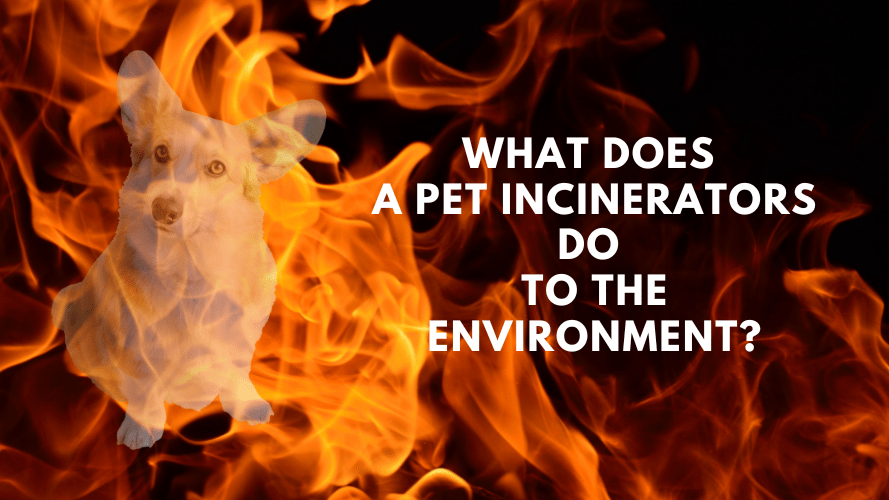As more people own pets, we need to use responsible and eco-friendly ways to handle their remains. Pet incinerators, also called animal incinerators, are a solution that addresses both the emotional and environmental aspects of pet disposal. This blog looks at the impact of pet incinerators on the environment, focusing on their benefits, drawbacks, and role in sustainable practices.
Pet Incineration
Pet incinerators are made to burn dead animals at high temperatures safely and quickly. These devices are used in veterinary clinics, animal shelters, and even for managing livestock and poultry waste. The main goal is to dispose of animal carcasses in a clean and dignified way that doesn’t hurt the environment.
How Pet Incinerators Help the Environment.
Reduced Disease Spread.
One good thing about using pet incinerators is that they make it less likely for diseases to spread. If the remains are not buried deep enough or the burial site is not kept clean, traditional burial methods can be dangerous. Animal bodies can spread diseases to other animals and humans by contaminating soil and water sources. Incinerating kills harmful bacteria and viruses.
Reduce the Amount of Land Used.
Landfills are a common way to dispose of animal remains, but they require a lot of land and can become overcrowded. Pet incinerators reduce the amount of waste that needs to be buried. This not only saves land but also reduces the environmental impact of landfill maintenance and expansion.
Eliminating Harmful Emissions.
Modern pet incinerators have advanced filtration systems that keep harmful emissions from coming out. These machines have brushes and filters that catch small pieces of dirt, metals, and other harmful things. This makes the incineration process less polluted than open burning or older methods. The controlled combustion process keeps harmful gases like carbon monoxide, sulfur dioxide, and nitrogen oxides in check.
Recovering Energy.
Some pet fires use the heat from burning things. This energy can be used to make heat or electricity, which makes the system work better. These incinerators turn trash into useful energy, which helps the environment and reduces the need for oil and gas.
Environmental Problems
Pet incinerators have many good things, but they can also harm the environment.
Energy Use and Energy Consumption.
Incinerating needs a lot of energy to reach the high temperatures needed for complete combustion. This energy is usually derived from electricity or fossil fuels, which can contribute to greenhouse gas emissions if not sourced from renewable energy. The process is energy-intensive, which is a consideration for its overall environmental impact.
Emissions and Remains
Even with advanced filtration systems, pet incinerators still emit small amounts of pollutants, such as dioxins and furans. Also, ash residue from incineration needs to be handled and thrown away properly to prevent environmental contamination.
How We Use Resources.
Incinerators require a lot of materials and resources to build and maintain. When deciding if something is sustainable, think about how it affects the environment and how long it will last.
Innovative and Sustainable Practices.
Some innovations and best practices have been developed to reduce the environmental impact of pet incineration.
Technology That Is Advanced.
Improvements in incineration technology have led to cleaner burning units. Innovations like secondary combustion chambers and improved filtration systems help reduce emissions and improve the efficiency of the incineration process.
Regulations
Pet incinerators must meet strict environmental safety standards. By following these rules, incinerators can operate safely and use less energy.
Using Renewable Energy.
By using renewable energy sources like solar or wind power, pet incinerators can help the environment by using less energy. This way of doing things helps make things last longer and better for the environment.
Education for the Community.
Educating pet owners and veterinarians about the benefits of pet incinerators can help them use this method more widely. Awareness campaigns can show the environmental benefits and encourage responsible disposal practices.
To Sum Up:
Pet incinerators are important for managing animal remains in a way that is environmentally friendly. They can be a good alternative to traditional burial and landfill methods by preventing disease, using less land, and reducing emissions. However it is important to keep improving technology and practices to address the potential drawbacks of energy use and emissions.
As the demand for sustainable solutions grows, pet incinerators will continue to evolve, incorporating new technologies and renewable energy sources to further reduce their environmental impact. By understanding and embracing these advancements, we can ensure that the final farewell to our beloved pets is both respectful and eco-friendly.
People Usually Search Keywords:
Garbage Incinerator for Sale | Animal Body Incinerator Machine | Animal Carcass Incinerator | Medical Incinerator Manufacturers | Medical Waste Autoclave with Shredder | Medical Waste Incinerator Manufacturer | Compost Machine for Sale | Commercial Composting Machine | Industrial Compost Machine | Compost Machine Industrial | Livestock Incinerators | Commercial Composting Machines | Trash Incinerator for Sale | Hospital Incinerator | Animal Incinerator for Sale | Animal Incinerator | Commercial Compost Machine | Industrial Composting Machine | Industrial Incinerator for Sale | Autoclave Shredder | Animal Incinerators | Incinerators for Sale | Pet Incinerator for Sale | Pet Incinerator | Medical Waste Incinerator | Poultry Incinerators | Livestock Incinerator | Best Compost Machines | Medical Incinerators | Best Composter Machine | Waste Incinerator for Sale | Incinerator for Sale | Best Compost Machine | Poultry Incinerator | Composter Machine


